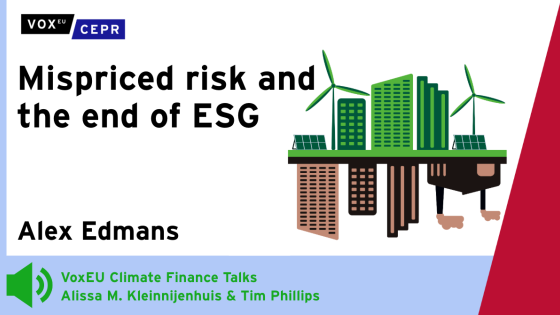The costs and benefits of carbon border measures have been extensively discussed in the rapidly growing body of literature on the economics of climate change mitigation policies, but most studies concentrate on competitiveness (of energy-intensive industries) and carbon leakage. Only a few studies examine the international trade impacts of a “carbon border tax” and none seems to look at the welfare implications from a global point of view. See Veenendaal & Manders (2008), McKibben & Wilcoxen (2008), Majocchi & Missaglia (2001), and the Vox columns by John Whalley (2008, 2009).
The global perspective, however, is the correct one. Climate change policy, even when implemented at the national level, is motivated by a concern for global (as opposed to national) welfare. It is thus important to adopt the same point of view when discussing so-called “border measures”. An important, but often overlooked, issue is the distinction between plain import tariffs (on the carbon content of goods imported) and the combination of import tariffs plus export rebates. I focus here on the case where there is no export rebate.
A simple illustration of the welfare gain from the introduction of a carbon tariff
This illustration relies on the most standard case, using a partial equilibrium approach, with linear demand and supply curves to show graphically the impact of a carbon tax (i.e. a tariff on the carbon content of imports) on global welfare.
There is only one good (of which the home country is a net importer). As usual the world is divided into two actors, an importing country (or group of importing countries) and the rest of the world (RoW). But the two have identical supply and demand curves and the same carbon intensity of production!
Figure 1 shows the global demand and supply curves of the good in question. Production of the good leads to emission of CO2 (at a given per unit rate). Private producers do not take into account the cost of emissions; hence the private supply curve is below the social supply curve, which takes into account the external impact of emissions. However, unless there is further government intervention, the international price of the good in question is determined by the intersection of private supply and demand, point O on the graph.
Consider the simplest case, which is when the home country introduces a cap-and-trade system such as the Emission Trading Scheme in Europe. In this case, the global supply curve is kinked at the quantity at which the Emission Trading Scheme limits the amount that can be produced in the home country (given the limit on emissions and the per unit emissions factor). After the introduction of the Emission Trading Scheme, the world price of the good in question is determined then at point A by the intersection between the (‘kinked’, private) supply curve subject and the global demand curve. It is apparent that the price is higher than before.
Figure 1. Equilibrium without tariff
What happens when the home country also introduces an import tariff? That reduces domestic demand and hence global demand, since it does not affect demand in the rest of the world. Assume the import tariff is specific, not ad valorem, because it is supposed to correct the externality that arises in production. Figure 2 shows the resulting equilibrium. With the introduction of the tariff, the demand curve shifts down, and the new equilibrium price is lower (equilibrium shifts from point A to point E).
The fall in the international price implies that foreign producers will produce less. Given that domestic production is limited by the Emission Trading Scheme, global production must fall as well. The sum of domestic plus foreign consumption must thus fall as well. But this is achieved by a rise in foreign consumption (since the price falls abroad) and a fall in domestic consumption of an even larger magnitude. This shift in consumption is due to the fact that domestic and foreign consumers face a different price if there is an import tariff.
Figure 2. Equilibrium with tariff
What are the welfare implications of the tariff? The standard welfare loss caused by a tariff is the usual triangle (consumer plus producer loss) enclosed by points ADE. As is well known, this welfare loss is of second order for any ‘small’ tariff.
In this case, however, there is also a gain due to the global externality in production. It is enclosed by the points ABCE (a parallelogram). The net welfare gain from imposing a tariff is given by the trapezoid enclosed by the points ABCD. It follows that a small carbon tariff must always improve global welfare.
The intuition behind this result is clear. As long as the tariff is small, the reallocation of consumption from consumers at home to consumers abroad causes only a loss of second-order importance. But the gain to global welfare from lower foreign production is of first-order importance. This argument is completely independent of the size of carbon leakage. Thus, those who oppose carbon taxes on grounds of lost sectoral competitiveness (e.g. Gurria 2009) miss the key issue.
Policy implications
The practical policy implications of this analysis are clear; the world would benefit from the imposition of a (small) carbon import tariff by the EU (the only significant country with a cap-and-trade system in operation).1 The justification for the tariff would, however, be completely different from the one usually advanced by politicians (and industry). It would not be to “level the playing field” for EU industry but to protect the global environment. This is a crucial difference since this implies that the tariff would be compatible with WTO rules, whose Article XX allows for exemptions if the aim is to protect a global natural resource.
How high should the tariff be?
In a fully specified model (Gros 2009a), I show that indeed there is a tariff that maximises global welfare (under the assumption that the home country has a-cap and-trade system but the rest of the world does not). The optimal tariff is approximately equal to the externality in production abroad.
Some rough, preliminary calculations suggest that a carbon tariff by the EU (or the US) could be much higher than the average most favoured nation tariff rates of the EU (on average about 3-4%). Recent calculations by Weber et al (2008) suggest that the total CO2 embodied in Chinese 2005 exports was around 1,670 million tonnes of CO2, or over 30% of all Chinese emissions (in jargon this is the so-called “embodied emissions in exports” measure).
This percentage corresponds roughly to the share of exports in the Chinese economy (around 35%). Given total Chinese exports in 2005 of around $760 billion, this implies an average carbon intensity of a little more than two tonnes of CO2 per $1,000 of exports. Table 1 in Gros (2009b) provides further evidence on differences in carbon intensities, showing a similar order of magnitude for other countries, such as India and Russia.
The final piece of information needed is the domestic carbon price. It is tempting to use the price under the present Emission Trading Scheme (around $20-25 per ton of CO2). However, this price refers only to the present Kyoto regime and cannot serve as a guide to what would result under the post-Kyoto regime. In the post-2012 period, the constraint will be likely to be much tighter. The Kyoto commitment (of an 8% reduction compared to 1990 levels of emissions) did not represent a tight constraint for the EU15, since the industrial collapse of the former East Germany reduced emissions by 3-4% and the switching of fuel from coal to gas in the UK (as a result of electricity and gas market liberalisation) also led to significant reductions.
EU “green” tariffs of 9% on average against Chinese exports
The Commission has estimated that a carbon price of around the €40-50 per tonne would be required to reach the EU’s 2020 commitments. This would imply, at current exchange rates, about $50-70 per tonne. This might be too high for the US, where $30-$40 per tonne has been estimated to be the politically feasible limit. At $40 (€30) per tonne, a border carbon tax on Chinese exports (to the EU) would be a bit more than two times $40 per $1,000 of exports, or approximately 9% on average. Rates would be much higher for energy-intensive products and lower for most others.
As China upgrades the sophistication of its exports, the average rate might come down, but under current conditions the average carbon tax could thus be very significant, much higher than the most-favoured-nation tariffs currently applied by the EU, and certainly an order of magnitude larger than the modest tariff reductions that were contemplated under the Doha round.
Summary
The economics of a carbon import tariff is clear. The politics is rather messy. A massive increase in EU tariffs against developing-country exports would certainly make them feel disadvantaged. While global welfare would increase, they might lose. However, there is an easy way out of the political problems. The EU could simply promise to use the proceeds from the tariff to help poorer exporting countries reduce the carbon intensity of their economies.
The Chinese government has recently announced that it is taking the unilateral commitment “that by 2020 China's carbon dioxide emissions per unit of GDP will dropped by between 40-45% compared with 2005.” At first, this appears to constitute a major commitment. It is not clear however, whether this implies a major departure from the baseline. The emission intensity of the Chinese economy should fall in any case, as services become relatively more important. It is thus difficult to say whether this target implies a meaningful price for carbon. Moreover, the Chinese plan foresees no carbon pricing in the manufacturing sector. The target is mainly to be reached by massive investments in alternative power generation. This implies that the economic argument for a carbon tariff (that production and hence pollution will move abroad) remains fully valid.
Other major emitters (India, Russia) have not come forward with any target at all. Border measures to support the fight against global climate change should thus remain on the agenda.
Footnotes
1 Institutionally it would be straightforward. The EU has exclusively competence for all matters concerning the customs union. Any decision to impose carbon border tax would have to start with an initiative by the Commission which then needs to be approved by Council and the European Parliament. Approval in the Council requires only a qualified majority.
References
Gros, Daniel (2009a), “Global Welfare Implications of Carbon Border Taxes”, CEPS Working Document No. 315, Centre for European Policy Studies, Brussels, July.
Gros, Daniel (2009b), “Why a cap-and-trade system can be bad for your health”, VoxEU.org, 5 December.
Gurria, Angel (2009) “Carbon has no place in global trade rules”, Financial Times, 4 November.
Majocchi, A. and M. Missaglia (2002), “Environmental taxes and border tax adjustment”, Societa Italiana Economia pubblica (SIEP), Working Paper No. 127/2002.
McKibben, W.J. and P. Wilcoxen (2008), “The Economic and Environmental Effects of Border Tax Adjustments for Climate Policy”, Brookings Global Economy and Development Conference, Brookings Institution, Washington, DC.
Veenendaal, P. and T. Manders (2008), “Border tax adjustment and the EU-ETS, a quantitative assessment”, CPB Document No. 171, Central Planning Bureau, The Hague.
Weber, Christopher L., Glen Peters, Dabo Guan and Klaus Hubacek (2008), “The contribution of Chinese exports to climate change”, Energy Policy, Vol. 36, No. 9, pp. 3572-3577.
Whalley, John (2008), “Carbon, trade policy, and carbon free trade areas”, VoxEU.org, 25 November.
Whalley, John (2009), “International trade and the feasibility of global climate change agreements”, VoxEU.org, 9 April.





